It looks like you're using an Ad Blocker.
Please white-list or disable AboveTopSecret.com in your ad-blocking tool.
Thank you.
Some features of ATS will be disabled while you continue to use an ad-blocker.
15
share:
Archaeologists from Mexico’s National Institute of Anthropology and History (INAH) have uncovered a shrine dedicated to Mictlantecuhtli, the Aztec
god of the dead, about 20 meters south of the Great Temple at Tehuacan. This find is of particular significance as it's the first shrine to
Mictlantecuhtli to have been discovered. Ramon Lopez Valenzuela, the archaeologist leading the excavation in Tehuacan said that it has been named the
"Temple of Skulls" due to the presence of two niches, on the north and west walls, each containing a single human skull and four human femurs.
Source & images - Conaculta
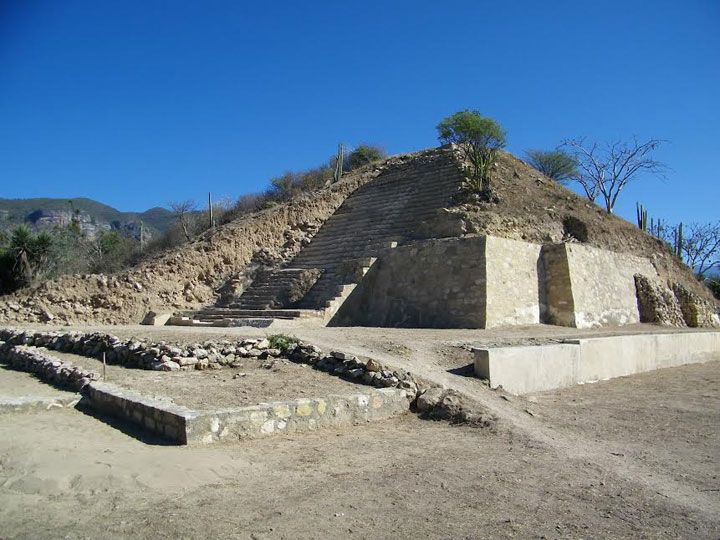
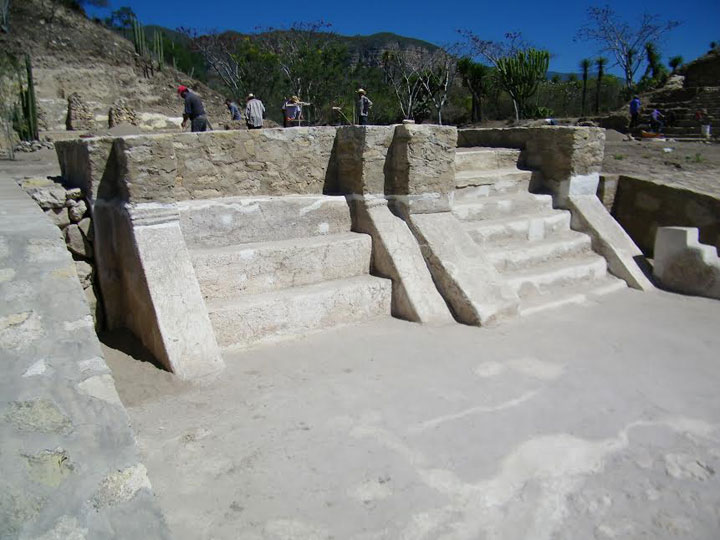
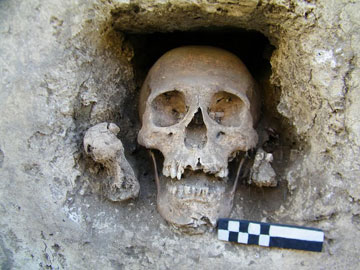
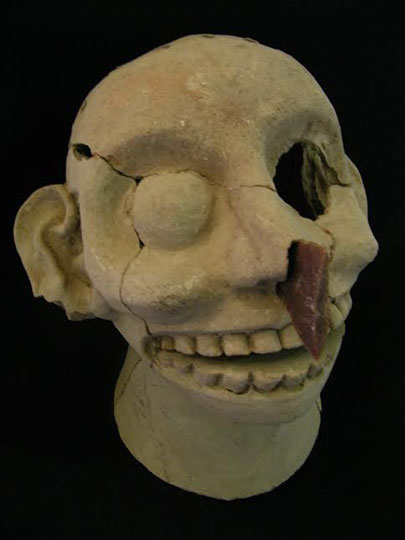
Source - Archaeology.org
From Wikipedia:
and
EDIT:
Forgot to include the following images of a life-sized ceramic statue of Mictlantecuhtli found outside the House of Eagles in the Templo Mayor at the Aztec capital Tenochtitlan, which is now Mexico City. The statue depicts Mictlantecuhtli's liver falling from his chest. The Aztecs believed that a passion was held in a person's liver. The statue is on display at the museum of the Templo Mayor in Mexico City.

image souce
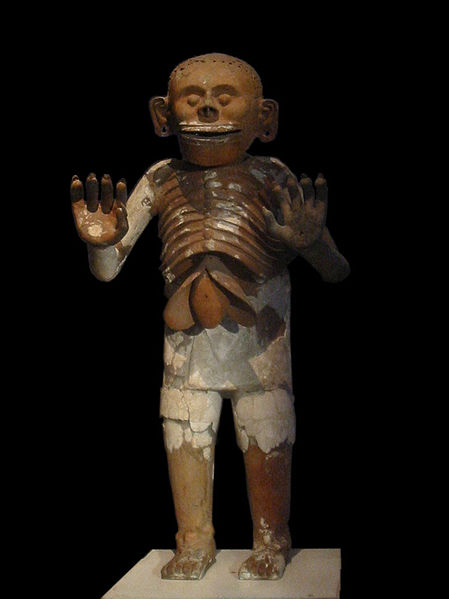
image source
Source & images - Conaculta




Traces of red paint on the mouth of one of the skulls resembles an image of Mictlantecuhtli in the Codex Borgia, and two ceramic heads and an effigy of the god of the dead were found on top of the temple. Remains of human sacrifices were also recovered.
Source - Archaeology.org
From Wikipedia:
Mictlantecuhtli (Nahuatl pronunciation: [mikt͡ɬaːnˈtekʷt͡ɬi], meaning "Lord of Mictlan"), in Aztec mythology, was a god of the dead and the king of Mictlan (Chicunauhmictlan), the lowest and northernmost section of the underworld. He was one of the principal gods of the Aztecs and was the most prominent of several gods and goddesses of death and the underworld. The worship of Mictlantecuhtli sometimes involved ritual cannibalism, with human flesh being consumed in and around the temple.[2]
Mictlantecuhtli was depicted as a blood-spattered skeleton or a person wearing a toothy skull.[4] Although his head was typically a skull, his eye sockets did contain eyeballs,[5] but he often kept his eyes closed, for he did not need eyes to see.[citation needed] His headdress was shown decorated with owl feathers and paper banners, and he wore a necklace of human eyeballs,[4] while his earspools were made from human bones.[6]
and
In Aztec mythology, after Quetzalcoatl and Tezcatlipoca created the world, they put their creation in order and placed Mictlantecuhtli and his wife in the underworld.[11]
According to Aztec legend, the twin gods Quetzalcoatl and Xolotl were sent by the other gods to steal the bones of the previous generation of gods from Mictlantecuhtli. The god of the underworld sought to block Quetzalcoatl's escape with the bones and, although he failed, he forced Quetzalcoatl to drop the bones, which were scattered and broken by the fall. The shattered bones were collected by Quetzalcoatl and carried back to the land of the living, where the gods transformed them into the various races of mortals.[12]
When a person died, they were interred with grave goods, which they carried with them on the long and dangerous journey to the underworld. Upon arrival in Mictlan these goods were offered to Mictlantecuhtli and his wife.[5]
EDIT:
Forgot to include the following images of a life-sized ceramic statue of Mictlantecuhtli found outside the House of Eagles in the Templo Mayor at the Aztec capital Tenochtitlan, which is now Mexico City. The statue depicts Mictlantecuhtli's liver falling from his chest. The Aztecs believed that a passion was held in a person's liver. The statue is on display at the museum of the Templo Mayor in Mexico City.

image souce

image source
edit on 25-11-2013 by theantediluvian because: (no reason given)
reply to post by theantediluvian
Nice find, this is very interesting.
One can only imagine the sort of thing that would happen at a temple dedicated
to the god of the dead.
Nice find, this is very interesting.
One can only imagine the sort of thing that would happen at a temple dedicated
to the god of the dead.
reply to post by theantediluvian
Wow this is Fascinating!! The only other time I've heard mention of this god of the dead was in a horror-genre book called "The Pariah" by Graham Masterton.S+f+thanks for this thread,now lemme delve into this
Wow this is Fascinating!! The only other time I've heard mention of this god of the dead was in a horror-genre book called "The Pariah" by Graham Masterton.S+f+thanks for this thread,now lemme delve into this
reply to post by weirdguy
Sounds a bit like the Aztec version of the Temple of Doom except in the Indiana Jones movie, the Thuggees didn't eat their sacrifices.
The worship of Mictlantecuhtli sometimes involved ritual cannibalism, with human flesh being consumed in and around the temple
Sounds a bit like the Aztec version of the Temple of Doom except in the Indiana Jones movie, the Thuggees didn't eat their sacrifices.
I'm not saying this is for sure, but I just wanted to mention that I do remember hearing somewhere about some reasonable sounding arguments against
the idea that human sacrifice or cannibalism was taking place by the Aztecs. I don't remember exactly HOW reasonable these arguments were, but I just
wanted to mention it in case anyone wanted to research it for themselves. For me, it doesn't really matter. I mean, who HASN'T done a few crazy
things in the history of mankind after a nice hefty dose of religion mixed with other dangerous drugs? I mean, hey, we've all been there, right?
Thanks for sharing. I love this kind of thing, blah blah blah, insert generic ats comment here.
Thanks for sharing. I love this kind of thing, blah blah blah, insert generic ats comment here.
theantediluvian
image source
That liver looks very much like a seed being released from it's husk. Fascinating.
3n19m470
I mean, who HASN'T done a few crazy things in the history of mankind after a nice hefty dose of religion mixed with other dangerous drugs? I mean, hey, we've all been there, right?
On which note, I wonder if the liver is all the more significant due to psilocybin use...
Psilocybin (O-phosphoryl-4-hydroxy-N,N-dimethyltryptamine or 4-PO-'___') is a prodrug that is converted into the pharmacologically active compound psilocin in the body by a dephosphorylation reaction. This chemical reaction takes place under strongly acidic conditions, or under physiological conditions in the body, through the action of enzymes called alkaline phosphatases.[43]
Psilocybin is metabolized mostly in the liver. As it becomes converted to psilocin, it undergoes a first-pass effect, whereby its concentration is greatly reduced before it reaches the systemic circulation. Psilocin is broken down by the enzyme monoamine oxidase to produce several metabolites that can circulate in the blood plasma, including 4-hydroxyindole-3-acetaldehyde, 4-hydroxytryptophol, and 4-hydroxyindole-3-acetic acid.[1] Some psilocin is not broken down by enzymes, and instead forms a glucuronide; this is a biochemical mechanism animals use to eliminate toxic substances by linking them with glucuronic acid, which can then be excreted in the urine.[76][99]
en.wikipedia.org...
KilgoreTrout
theantediluvian
image source
That liver looks very much like a seed being released from it's husk. Fascinating.
I think you might be right. This so-called deity in the Codex Borgia (if they are the same as this article describes) references earthquakes and had the ability to stop quakes at will by transforming in his chest cavity violent motion energy into something less destructive like light or sound: the same energy - only different - just like the seed inside a husk.
There is a lot of symbology around earthquakes in South American cultures including the two "attendants" who stand either side of a central female figure or a tree or other object associated with great knowledge. The two skulls would probably have belonged to naturally deceased, highly respected members of the civilisation to represent the attendants. The femurs represent the two staffs the attendants carry, squared, hence 4. 4 is a number associated with the most violent of quakes. Mictlantecuhtli would convert such quakes into 3 (expelled) + 1 (absorbed) (hence the three parts of the "liver" = seed). Also his name which starts "Mi", the number 3 in many ancient tongues. I suspect the "human sacrifice" remains are also the remains of venerated ancestors given one of the highest honours in the same way our ancestors used to leave remains at Stonehenge (according to BBC's Time Team).
So, to refer to him as the god of death etc is something of a misnomer, when he was actually considered something of a hero.
xihuitl
So, to refer to him as the god of death etc is something of a misnomer, when he was actually considered something of a hero.
I enjoyed your post very much, thanks.
As to the above, I think that throughout the world, the gods of the dead are similarly structured. If there is a belief in the afterlife, the god of the dead is the guide, or one of them, to rebirth via the underworld. Not someone to be feared, but someone to rejoice at seeing, because you know that you are in the best hands to undertake that journey.
new topics
-
BIDEN Admin Begins Planning For January 2025 Transition to a New President - Today is 4.26.2024.
2024 Elections: 2 hours ago -
Big Storms
Fragile Earth: 4 hours ago -
Where should Trump hold his next rally
2024 Elections: 6 hours ago -
Shocking Number of Voters are Open to Committing Election Fraud
US Political Madness: 7 hours ago -
Gov Kristi Noem Shot and Killed "Less Than Worthless Dog" and a 'Smelly Goat
2024 Elections: 8 hours ago -
Falkville Robot-Man
Aliens and UFOs: 8 hours ago -
James O’Keefe: I have evidence that exposes the CIA, and it’s on camera.
Whistle Blowers and Leaked Documents: 9 hours ago -
Australian PM says the quiet part out loud - "free speech is a threat to democratic dicourse"...?!
New World Order: 10 hours ago -
Ireland VS Globalists
Social Issues and Civil Unrest: 10 hours ago -
Biden "Happy To Debate Trump"
2024 Elections: 11 hours ago
top topics
-
James O’Keefe: I have evidence that exposes the CIA, and it’s on camera.
Whistle Blowers and Leaked Documents: 9 hours ago, 17 flags -
Australian PM says the quiet part out loud - "free speech is a threat to democratic dicourse"...?!
New World Order: 10 hours ago, 15 flags -
Blast from the past: ATS Review Podcast, 2006: With All Three Amigos
Member PODcasts: 13 hours ago, 13 flags -
Biden "Happy To Debate Trump"
2024 Elections: 11 hours ago, 13 flags -
Ireland VS Globalists
Social Issues and Civil Unrest: 10 hours ago, 9 flags -
Mike Pinder The Moody Blues R.I.P.
Music: 13 hours ago, 8 flags -
Shocking Number of Voters are Open to Committing Election Fraud
US Political Madness: 7 hours ago, 6 flags -
BIDEN Admin Begins Planning For January 2025 Transition to a New President - Today is 4.26.2024.
2024 Elections: 2 hours ago, 6 flags -
What is the white pill?
Philosophy and Metaphysics: 12 hours ago, 6 flags -
RAAF airbase in Roswell, New Mexico is on fire
Aliens and UFOs: 11 hours ago, 5 flags
active topics
-
RAAF airbase in Roswell, New Mexico is on fire
Aliens and UFOs • 12 • : pianopraze -
BIDEN Admin Begins Planning For January 2025 Transition to a New President - Today is 4.26.2024.
2024 Elections • 14 • : WeMustCare -
A Warning to America: 25 Ways the US is Being Destroyed
New World Order • 29 • : 19Bones79 -
Big Storms
Fragile Earth • 15 • : Caver78 -
What is the white pill?
Philosophy and Metaphysics • 22 • : AlexandrosOMegas -
University of Texas Instantly Shuts Down Anti Israel Protests
Education and Media • 315 • : CriticalStinker -
Gov Kristi Noem Shot and Killed "Less Than Worthless Dog" and a 'Smelly Goat
2024 Elections • 58 • : cherokeetroy -
Biden "Happy To Debate Trump"
2024 Elections • 51 • : rickymouse -
Hate makes for strange bedfellows
US Political Madness • 53 • : 19Bones79 -
SETI chief says US has no evidence for alien technology. 'And we never have'
Aliens and UFOs • 79 • : SchrodingersRat
15
